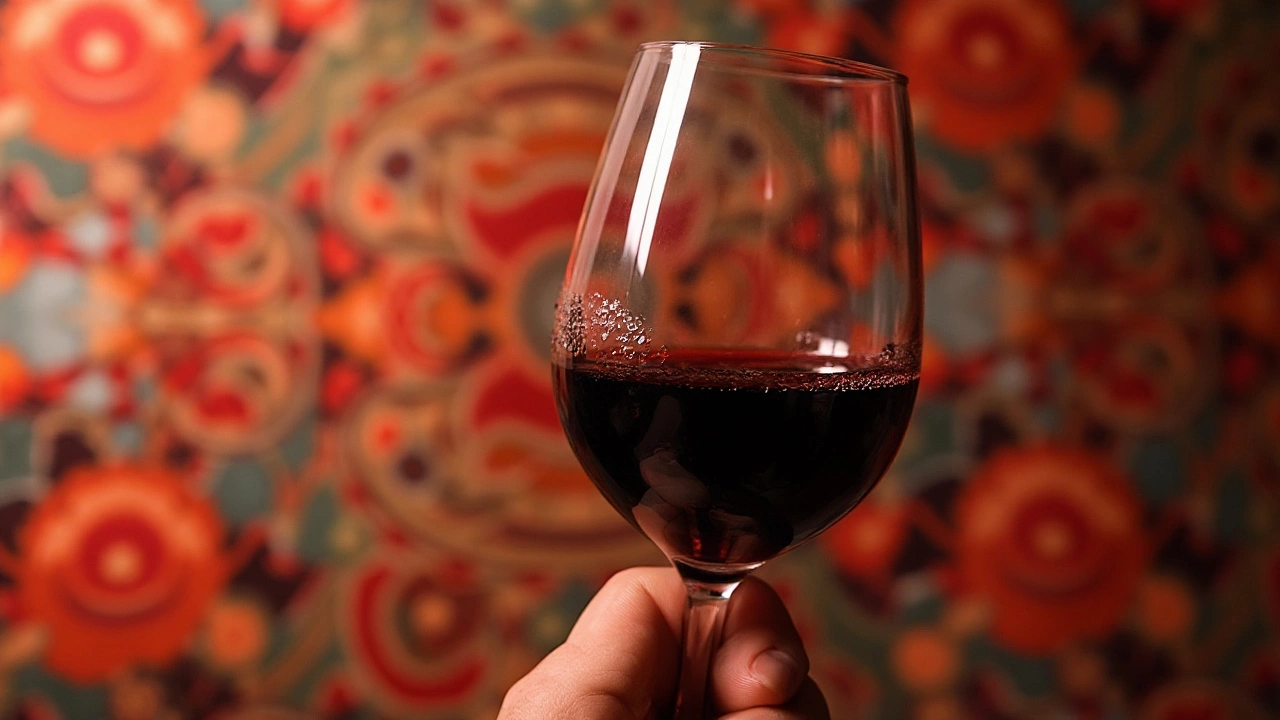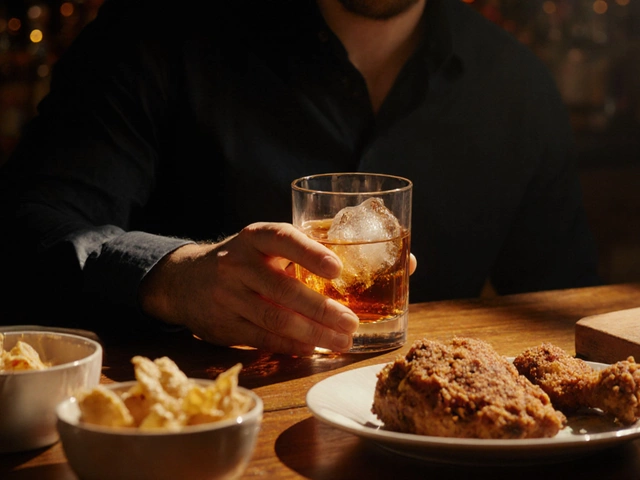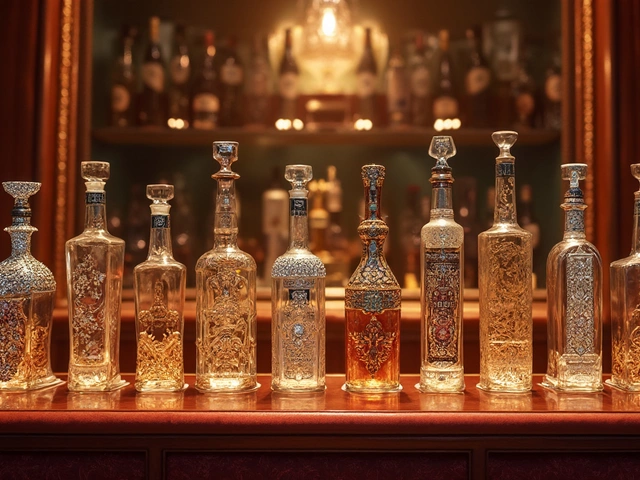
As you lift your glass of wine, admiring its rich hue, you may notice delicate streams of droplets forming on the inside. These are what wine aficionados call 'wine legs' or 'tears', a phenomenon that intrigues both novices and seasoned connoisseurs alike. But what truth do these elusive trails hold? Are they a hidden code to decipher the mysteries of your wine?
Despite popular beliefs, wine legs are not an indication of a wine's quality or sweetness. Instead, they’re a captivating play of physics and chemistry, reflecting the alcohol content and surface tension within your glass. By understanding the science behind these droplets, you can enhance your wine-tasting experience and appreciate the subtleties of what's in your glass.
- The Science Behind Wine Legs
- The Myth of Wine Legs and Quality
- What Wine Legs Tell You About Alcohol Content
- How to Observe Wine Legs Correctly
- Tips for Interpreting Wine Legs
The Science Behind Wine Legs
Wine legs, those enchanting trails of liquid that meander down the inside of your glass, are more than just a beautiful curiosity. They are a result of a fascinating interaction between physics and chemistry, known as the Gibbs-Marangoni Effect. This phenomenon occurs due to the interplay of alcohol and water evaporation, combined with surface tension differences. When you swirl your wine, alcohol, which is more volatile than water, evaporates more quickly at the area where wine meets air. This increase in alcohol concentration leads to a change in surface tension, causing the liquid to climb up the sides of the glass, forming those alluring wine legs.
Interestingly, the formation of wine legs can tell us about the alcohol content of the wine but not its quality. Denise Starks, a noted sommelier, once explained,
“Wine legs are akin to fingerprints, unique to each wine, yet they can only hint at the alcohol level, not whether the wine is exquisite or inferior.”This perspective clarifies a common misconception that the presence of legs signifies a superior wine, a notion that is simply not supported by scientific evidence. Wine legs are a stunning reminder that sometimes beauty is in the details, but those details require proper interpretation.
In exploring the science of wine legs, it's helpful to understand the role of surface tension. Surface tension is essentially the tension of the liquid surface film that holds the wine in place as it forms legs. When swirling the glass, the evaporation process coupled with gravitational pull creates a cycle where legs form, glide, and finally fall back into the wine. This drama of liquid movement can be mesmerizing, each formation subtle yet significant. It's worth practicing the art of observing wine legs closely, as they reveal the dance of elements within that glass, offering a visual whisper of the wine's alcoholic strength.
The Myth of Wine Legs and Quality
There's a persistent belief among some wine drinkers that the presence of wine legs correlates with the quality of the wine in their glass. This assumption, while romantic, is actually more myth than fact. The penchant for assuming that more pronounced legs equate with superior quality is rooted in a misunderstanding of what legs indicate. Historically, many have viewed thicker or more numerous legs as a sign of a richer, more full-bodied wine. However, the reality is quite different.
The phenomenon of wine legs is primarily a display of alcohol content and surface tension, known as the Gibbs-Marangoni effect. When you swirl the wine in your glass, alcohol evaporates from the wine's surface faster than water due to its lower boiling point. This differential rate creates a higher concentration of water on the surface, which increases surface tension, causing the liquid to climb the glass in droplets. Consequently, wine with higher alcohol content will demonstrate more prominent legs, yet this has no inherent connection with quality.
It's important for wine enthusiasts to note that the alcohol concentration, which wine legs genuinely reveal, can be a factor in flavor perception, but it does not directly align with a wine being good or bad. A bold Cabernet Sauvignon from Napa Valley can display pronounced legs similar to an inexpensive fortified wine simply based on alcohol levels. This naturally denounces the quality myth.
To further illustrate this misunderstanding, let's consider the views of wine expert and chemist, Dr. Gavin Sacks.
"Wine legs are often romanticized elements seen swirling in the glass; however, they can only reveal the ethyl elegance rather than the enological excellence."His words remind us that it is taste buds, not visual cues, that decide quality.
While the romantic notion may add to the enjoyment of observing a wine's aroma and hue, it's crucial to appreciate other aspects like aroma, structure, and finish when evaluating a wine's merits. In essence, while the aesthetic dance of wine legs is captivating, discerning drinkers know to rely on their palates over their eyes to deem a bottle worthy.

What Wine Legs Tell You About Alcohol Content
Wine legs, those mesmerizing rivulets that form after you swirl your glass, are often a topic of both curiosity and misconception. Observing these wine legs can indeed lead to insights about the alcohol content in your wine. The phenomenon is rooted in the Gibbs-Marangoni Effect, which describes how variations in surface tension cause fluid movement. When you swirl the wine, alcohol, being more volatile than water, evaporates more quickly when exposed to air. This evaporation increases surface tension, making the remaining liquid adhere more to the glass and eventually form those eye-catching streaks.
Essentially, the more pronounced the legs, the higher the alcohol content, as a higher alcohol concentration increases evaporation, creating more defined streams. However, this is not an exact science. Environmental factors and the wine’s composition, like sugar and glycerol levels, also influence the visibility and movement of the wine legs. But as a general observation when comparing similar types of wine, legs can give a visual clue about alcohol levels. In a survey by the Wine Institute, over 85% of respondents mistakenly believed that richer or more prominent legs indicated sweetness rather than alcohol, which is an important myth to debunk.
"Understanding wine legs can enhance your tasting experience. They give us a clue about the wine's alcohol by volume (ABV) without needing to check the label," says Emily Wines, Master Sommelier.
In tasting rooms or at home, you can play a little game of 'guess the ABV' using the appearance of wine legs. Swirl your wine and hold the glass in such a way that the light catches the trails. Calculate whether you observe quick formations of streaks that indicate higher alcohol content. For example, a robust Zinfandel may have slow-forming, thick legs, while a lighter Riesling won’t show very pronounced tears. This interaction between the alcohol content and wine legs can add an extra layer of appreciation when identifying subtle characteristics, bringing a new dimension to both experts and novices alike.
You might enjoy experimenting across a selection of wines to see this effect firsthand. Take note of how wines with similar alcohol levels seem to have comparable leg structures. Perhaps create a small chart to compare the number of visible legs and their thickness, cross-referencing this with the wine's labeled alcohol content. This visual analysis can become a delightful part of your wine journey, deepening your understanding of how chemistry meets gustatory pleasure in every sip.
How to Observe Wine Legs Correctly
When you embark on the journey of wine tasting, observing wine legs can be a delightful experience. To truly appreciate this delicate dance of droplets, it’s important to create the right conditions. Start by choosing a stemmed glass, usually one with a rounded bowl which allows you to swirl your wine effectively. Once you’ve poured a modest amount of wine into the glass, hold it by the stem to prevent heat from your hands altering the wine's temperature.
Next, gently swirl the wine. This action is crucial because it not only releases the enticing aromas but also encourages the formation of those fascinating wine legs. Watch patiently as the liquid clings to the sides of the glass and then begins to trickle down in streams, akin to a rain creating rivulets on a windowpane during a soft drizzle. The rate at which the legs form and descend can tell you enlightening tales about the wine's alcohol content and viscosity. Wines with higher alcohol content tend to produce slower, thicker legs.
The lighting in the room can dramatically affect how clearly you see the legs, so ensure there’s adequate light without casting direct reflections onto the glass. A white backdrop can be quite beneficial in providing contrast, making the legs stand out more prominently. Keep in mind that the ambient lighting doesn’t need to be stark; a diffuse, soft light can be preferable as it doesn’t disrupt the intimate ambiance often desired during wine tasting sessions. Legend has it that old-school sommeliers could determine the origin and age of a wine just by examining its legs, though this is more folklore than fact.
“Wine is sunlight, held together by water,” quoted Galileo Galilei—a reminder of the alchemy that transforms simple grapes into something remarkable, and the legs are merely nature's way of letting us glimpse a part of this transformation.
It’s intriguing to note that not only alcohol content but also sugar levels can influence the legs. Wines that are higher in sugar often demonstrate thicker, more pronounced legs, sometimes also slower. This is due to the increased viscosity that sugar imparts to the liquid. For those keen on understanding their wine at an even deeper level, performing a side-by-side comparison with a companion wine—a wine you know well or one with starkly different characteristics—can be enlightening. This hands-on approach is invaluable in honing your observational skills and heightens your appreciation of the subtleties involved.

Tips for Interpreting Wine Legs
As you pour the wine into a glass and give it a gentle swirl, you may become transfixed by the elegant legs slowly forming along the inside of the glass. Although these wine legs are not a measure of your wine's quality, they do provide a fascinating insight into its alcohol content and viscosity. Understanding how to interpret these legs will enhance your appreciation and perception of wine. To start, notice that the thickness and speed of the wine legs can hint at the alcohol content. Wine with prominent legs, which move slowly down the glass, often has a higher alcohol content. This phenomenon occurs due to the Gibbs-Marangoni Effect, where evaporation rates and surface tension create mesmerizing streaks. If the viscosity appears higher, it might also indicate a wine rich in alcohol or residual sugar, like some luscious dessert wines.
One critical step is to observe the unique behavior of wine legs specific to the wine you're tasting. Each wine has its signature dance, influenced by its composition. While alcohol content plays a primary role, other factors like sugar levels can also have an effect, adding an extra layer of complexity to your observation. An analytical approach could be to compare different wines side by side, noting how the legs differ. This exercise can enhance your palate by linking visual clues with taste profiles, solidifying your tasting vocabulary. According to wine expert Jancis Robinson, "Wine is an intricate matrix, and every characteristic, including the legs, offers a wealth of information if we know how to look."
To savor the full potential of a wine's story, consider employing a systematic tasting routine. First, give your wine glass a gentle swirl. This helps release the bouquet and encourages legs to form. Pause and watch them slowly slide back into the pool, noting the shape, thickness, and velocity as they do. Following that, take a moment to inhale deeply before taking a sip — it sets the stage for a more nuanced tasting experience. As you practice this, your ability to gauge the wine's texture and body will sharpen, allowing you to appreciate everything from light-bodied rosés to opulent reds.
For those looking to deepen their knowledge, it might be helpful to attend tastings or join wine clubs, where passionate discussion and detailed analysis on topics like wine legs are common. You might find that other enthusiasts use varied descriptors or have alternate hypotheses, enriching your understanding of this world. Additionally, recording observations in a wine journal can track your progress and refine your ability to articulate what you see and taste. Over time, the patterns you note in wine legs might just help you become a more discerning wine lover.





Categories